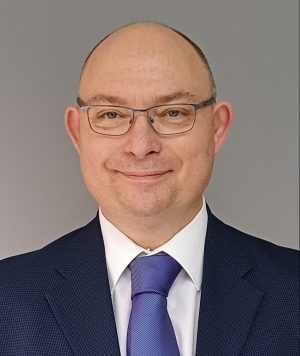Dr Andrew Thornett

3D and 4D mapping of the Milky Way, using data from Lichfield Radio Observatory (LRO), central UK, collected by two radio telescopes, an ex-military dipole array and a parabolic solar cooker.
Measuring hydrogen line (1420.405MHz) in the Milky Way is a common project for amateur radio astronomers. Such measurements can be used to map the galactic arms of the Milky Way, measure our galaxy’s mass, and demonstrate the presence of dark matter in the galaxy.
Methods of displaying the data obtained from such projects has been limited to graphical plots of data and 2 dimensional maps of the galaxy. These are often difficult for members of the general public to properly appreciate, which makes their use in outreach of limited value.
There are now new ways of presenting our findings which can provide greater appeal to those who are not well versed in radio astronomy methods and interpretations.
This talk explores these new methods, including displaying the data in three spatial dimensions, using free software packages such as Easy Radio Astronomy Software and Rinearn 3D. In addition, these programmes can be used to map the data to a sphere in order to give views of the Milky Way as it would be seen from the surface of the Earth or from outside a ball surrounding the Earth.
The methods are used to display data collected at Lichfield Radio Observatory (LRO) in central United Kingdom, from its three hydrogen line radio telescopes, LRO-H1, based on an ex-military dipole array 86cm x 86cm in size, LRO-H2, built around an 150cm diameter parabolic reflector originally designed to act as a solar cooker, and LRO-H3, which uses as its aerial a 13-element Patch Yagi.
Bio
Dr Andrew Thornett is a General Medical Practitioner in Birmingham with an eclectic interest and passion for all things astronomy. He is a member of the BAA Radio Astronomy Group and Society of Amateur Radio Astronomers in the USA, and of Rosliston Astronomy Group in Derbyshire, and the Astronomical Society of Penang in Malaysia.
He has special intersts in radio astronomy and solar astronomy – he considers himself to be one of a new breed of radio astronomer who don’t understand half of what is going on but finds that modern technology and software allows him to get it working and to achieve amazing things! He then spends his time learning as much as he can and he is keen to encourage other people to consider this part of the hobby.
From the solar perspective, using his Daystar Quark Filters, he loves to photograph the Sun and produce solar animations, and he has recently acquired a spectrohelioscope and is amazed by what this technology can offer amateurs, especially as it can be largely 3D-printed at home!!
His message: You can do it and you can do it even with loads of cloud and light pollution from your suburban or urban home, with minimal knowledge and for reasonable cost! You just need the passion!
Workshop Title: Exploring the NanoVNA – A Beginner’s Guide to Optimising Radio Telescopes.
Andrew Thornett and Jason Burnfield.
Abstract:
This one-hour introductory workshop is designed for amateur astronomers interested in practically using the NanoVNA (Vector Network Analyzer) to analyse and enhance radio telescope systems, but who find it difficult to understand all the theory and electronics. Participants will learn how to use this powerful, affordable tool to measure antenna impedance, match feedlines, diagnose signal path losses, and optimize overall system performance at radio astronomy frequencies, including the hydrogen line at 1420 MHz. The session will include a practical demonstration, including a guide to making a shortened antenna far-field, testing range, guidance on interpreting key plots (such as S11 and Smith charts), and tips for real-world use in low-noise observational setups. No prior experience with VNAs is required—just a passion for refining your radio astronomy equipment.